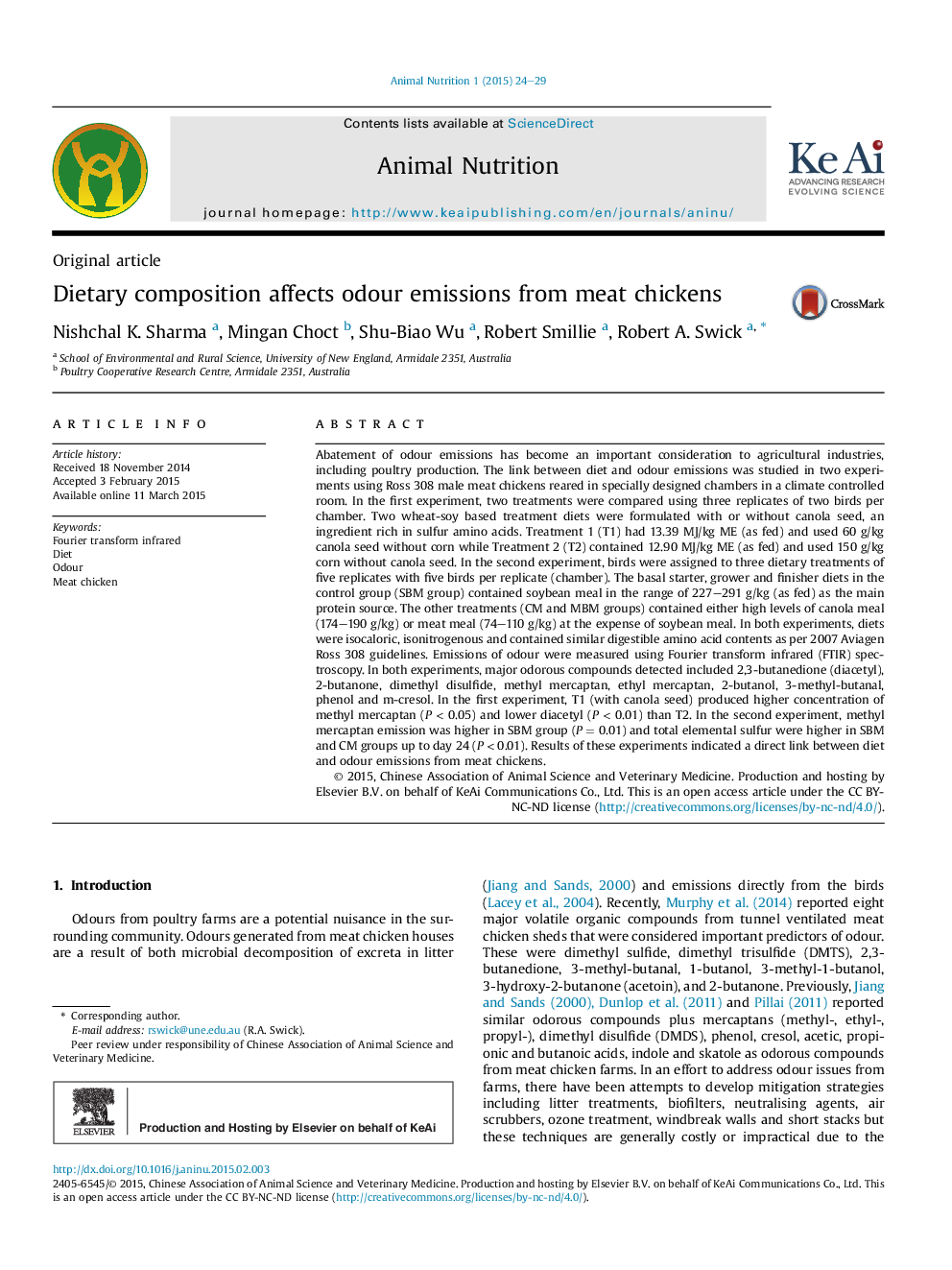| کد مقاله | کد نشریه | سال انتشار | مقاله انگلیسی | نسخه تمام متن |
|---|---|---|---|---|
| 4522318 | 1323168 | 2015 | 6 صفحه PDF | دانلود رایگان |
Abatement of odour emissions has become an important consideration to agricultural industries, including poultry production. The link between diet and odour emissions was studied in two experiments using Ross 308 male meat chickens reared in specially designed chambers in a climate controlled room. In the first experiment, two treatments were compared using three replicates of two birds per chamber. Two wheat-soy based treatment diets were formulated with or without canola seed, an ingredient rich in sulfur amino acids. Treatment 1 (T1) had 13.39 MJ/kg ME (as fed) and used 60 g/kg canola seed without corn while Treatment 2 (T2) contained 12.90 MJ/kg ME (as fed) and used 150 g/kg corn without canola seed. In the second experiment, birds were assigned to three dietary treatments of five replicates with five birds per replicate (chamber). The basal starter, grower and finisher diets in the control group (SBM group) contained soybean meal in the range of 227–291 g/kg (as fed) as the main protein source. The other treatments (CM and MBM groups) contained either high levels of canola meal (174–190 g/kg) or meat meal (74–110 g/kg) at the expense of soybean meal. In both experiments, diets were isocaloric, isonitrogenous and contained similar digestible amino acid contents as per 2007 Aviagen Ross 308 guidelines. Emissions of odour were measured using Fourier transform infrared (FTIR) spectroscopy. In both experiments, major odorous compounds detected included 2,3-butanedione (diacetyl), 2-butanone, dimethyl disulfide, methyl mercaptan, ethyl mercaptan, 2-butanol, 3-methyl-butanal, phenol and m-cresol. In the first experiment, T1 (with canola seed) produced higher concentration of methyl mercaptan (P < 0.05) and lower diacetyl (P < 0.01) than T2. In the second experiment, methyl mercaptan emission was higher in SBM group (P = 0.01) and total elemental sulfur were higher in SBM and CM groups up to day 24 (P < 0.01). Results of these experiments indicated a direct link between diet and odour emissions from meat chickens.
Journal: Animal Nutrition - Volume 1, Issue 1, March 2015, Pages 24–29
